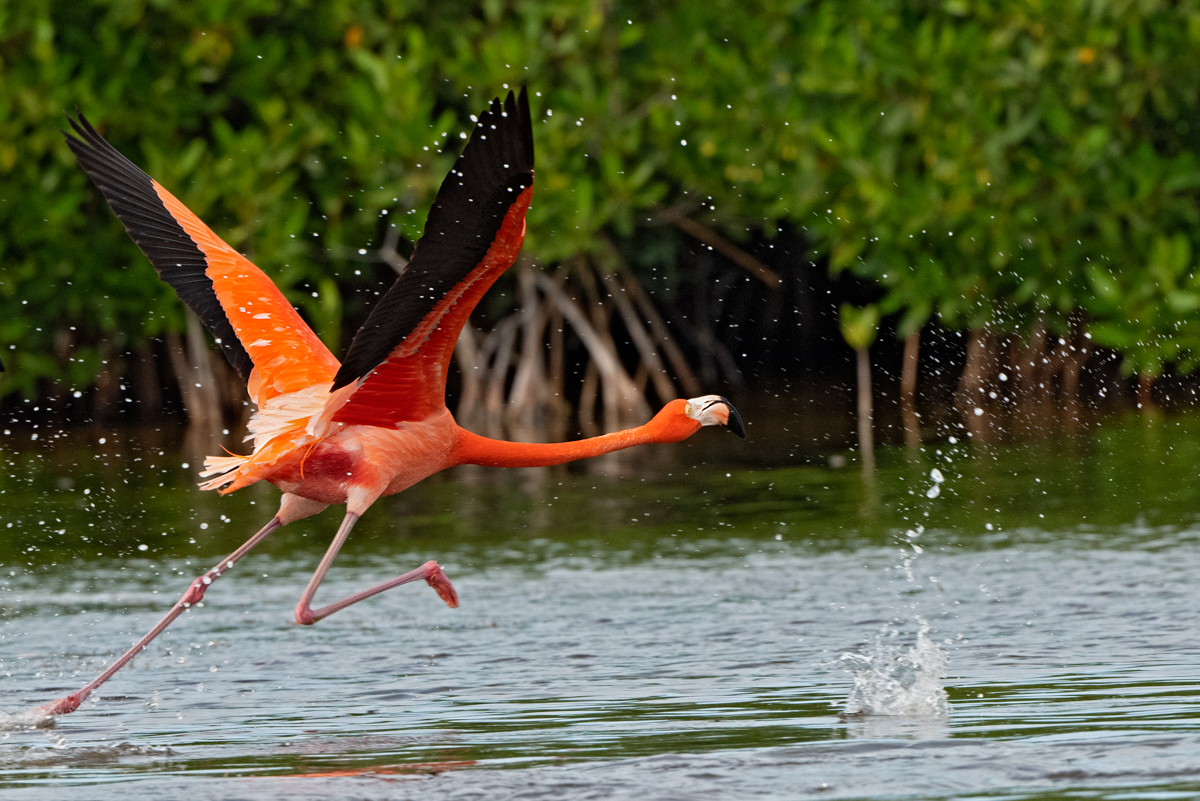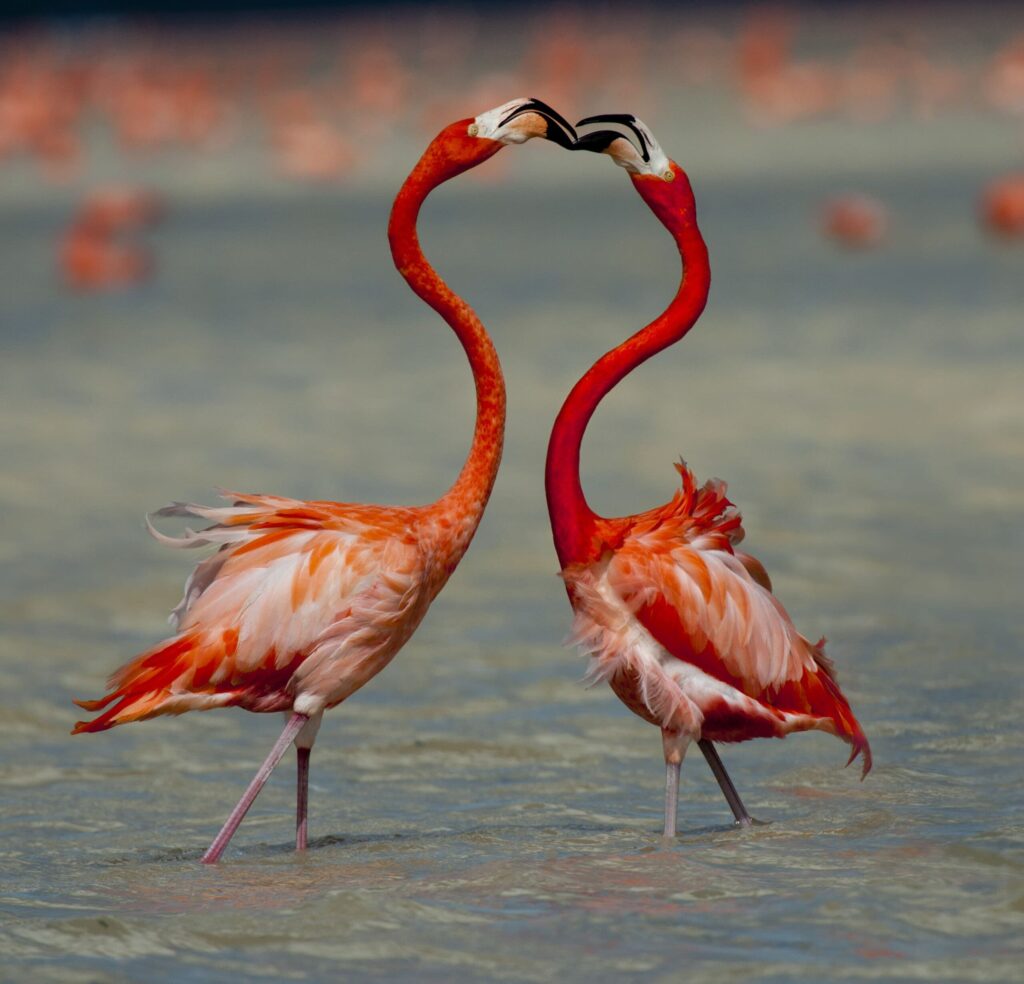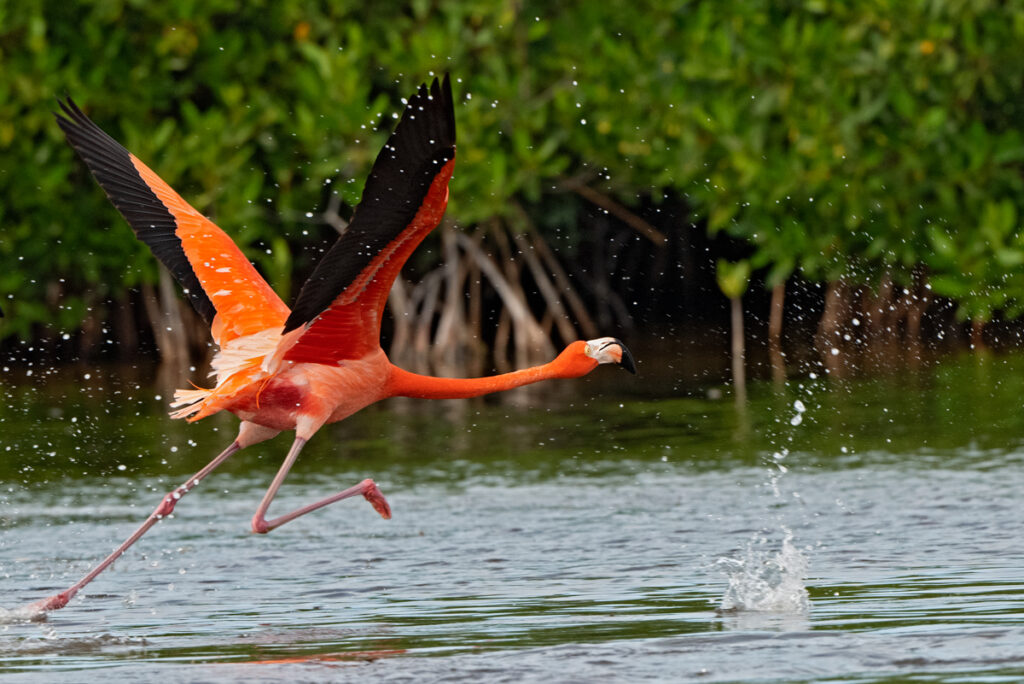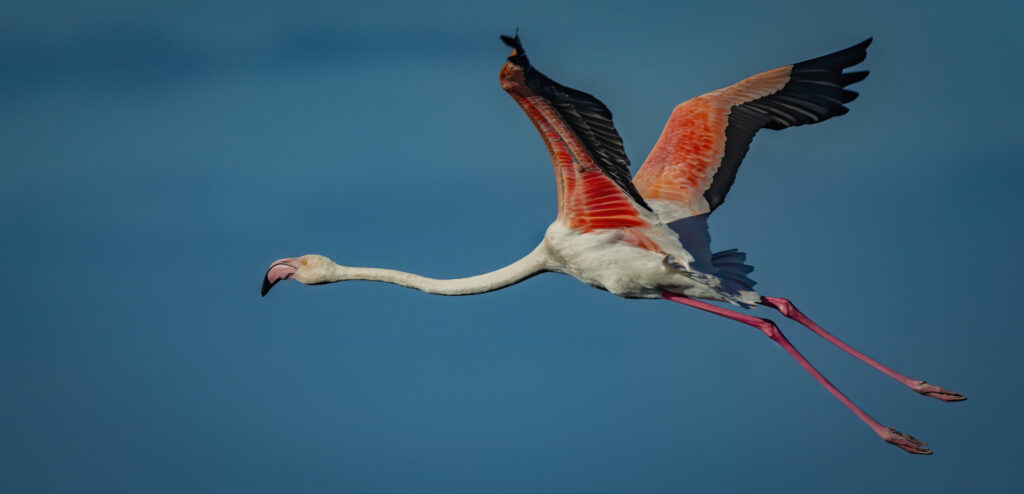
There is a phrase: “Be a flamingo in a flock of pigeons”. This of course means standing out from the crowd, showing everyone how special you are, and don’t be afraid to express your individuality. Why are flamingos so unique, and is being part of a crowd a key to their success?
At the end of January 2023, a pink pigeon was seen and then captured in Madison Square Park, New York. This unusual bird was not some rare phenomenon but most likely a victim of human thoughtlessness. Spraying or dyeing animals blue or pink is a dreadful trend that some people feel compelled to follow when giving baby showers or at gender-reveal parties. This particular king pigeon was rescued and nicknamed Flamingo, but despite the rehabilitators’ best efforts, the dye just wouldn’t come out and sadly Flamingo died of inhalation of toxic fumes a week later. The people who did this to Flamingo have not been traced, but one hopes they have read of his fate and have understood the consequences of their actions.

Real flamingos don’t get their signature color from artificial dyes or paint. That stunning pink hue that sets this bird apart from all other species comes instead from the food they eat. Like all birds, flamingo feathers are made of keratin, the hard protein that makes up our nails and hair. Many species of birds get their plumage coloration from the way their feathers are structured, containing tiny pockets of air that reflect and refract the white light from the sun and show us dazzling blues and greens, as with kingfishers or hummingbirds. All other species get their plumage colors from pigments contained in their food. Carotenoids give plants like carrots, tomatoes, and berries their oranges, reds, and yellows, and likewise, algae are also packed full of this reddish pigment. Brine shrimp eat the algae, then flamingos eat the shrimp, as well as the algae directly. The pigments are then metabolized and passed into their feather construction. Some nestling flamingos are a pale pink from very early on as they are fed carotenoid-rich milk by both parents and over time their pale, faint pinks begin to flourish into vibrancy. Others remain covered in grey down and some, like the Chilean flamingo, don’t achieve their signature reddish pinks until 2 or 3 years of age.

There are six species of flamingo, four of which are found in the New World. The only species seen in North America is the American or Caribbean Flamingo, the largest species in the Americas, and can be distinguished from other species by their distinctive black bills and the stark contrast in the black primary and secondary flight feathers with the rich reds, oranges, and pinks of the rest of the wings.

The largest and most widespread species is the Greater Flamingo, coming in at around a meter and a half tall, and weighing between 2 and 4kg. They are found across Africa, the Indian subcontinent, the Middle East, and southern Europe. Owen visited one of the best sites to see these birds on the African continent at the Strandfontein Sewage Works, Cape Town, during a trip to South Africa in 2015. The smallest species, the Lesser Flamingo, is still a tall bird by any standards, at around 80 or 90cm from head to toe. Their range is substantially smaller, being found also in sub-Saharan Africa, as well as India, which is where Owen took this captivating photograph of a flock flying past.

Like many species, flamingos numbers are feeling the effects of habitat loss and climate change, as well as a worrying indication that lithium mining may well be affecting water levels in their feeding grounds. Lithium is needed to power electric vehicles, so it is a concern that one of the key solutions to reversing climate change and moving away from fossil fuel dependency also appears to be contributing to a negative effect on resources for the birds.
A new report published in Zoo Biology at the beginning of 2023 has hit upon exciting new information that could very well assist in stabilizing and recovering flamingo numbers, however. Flamingos are very social birds and in the wild, colonies of tens of thousands are not uncommon to see. A flock can be anything between 2 and 350 birds, but the average size is around 70 individuals. Population numbers in zoos and aquaria, known as ex-situ populations, have been struggling to maintain sustainable levels, despite being provided with suitable habitats. But this new research shows that reproductive success appears to depend on the flock size, and a minimum of 50 looks to be the magic number. When new members have been added to ex-situ flocks of small sizes, if there is also an equal sex ratio, successful reproduction has significantly increased. These institutions are now encouraged to ensure that they have at least 50 or 100 birds in their enclosures if the world continues marveling at these extraordinary and beautiful birds.


